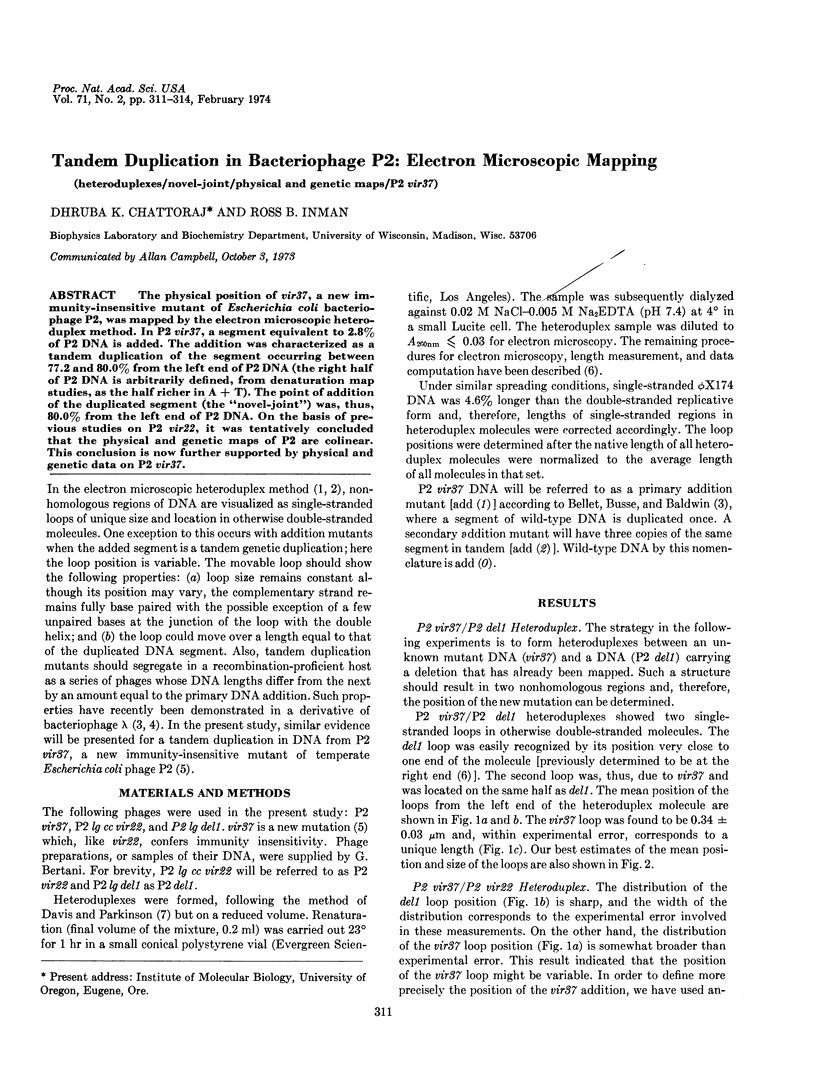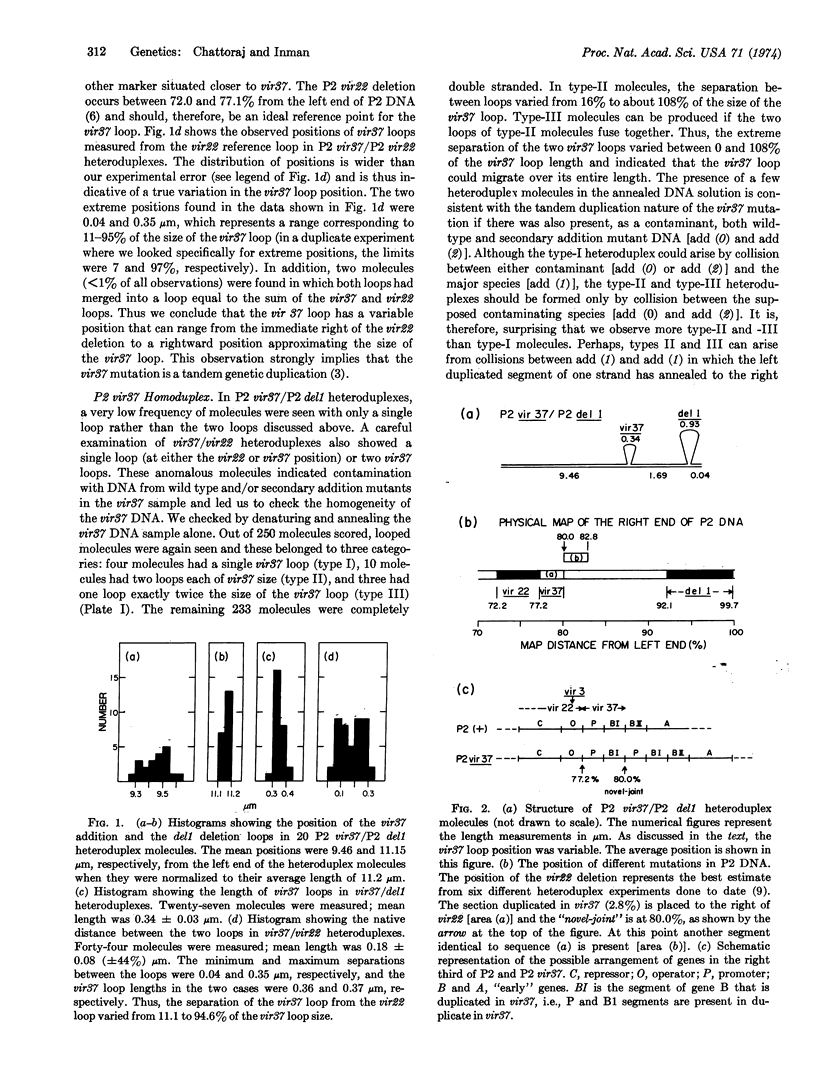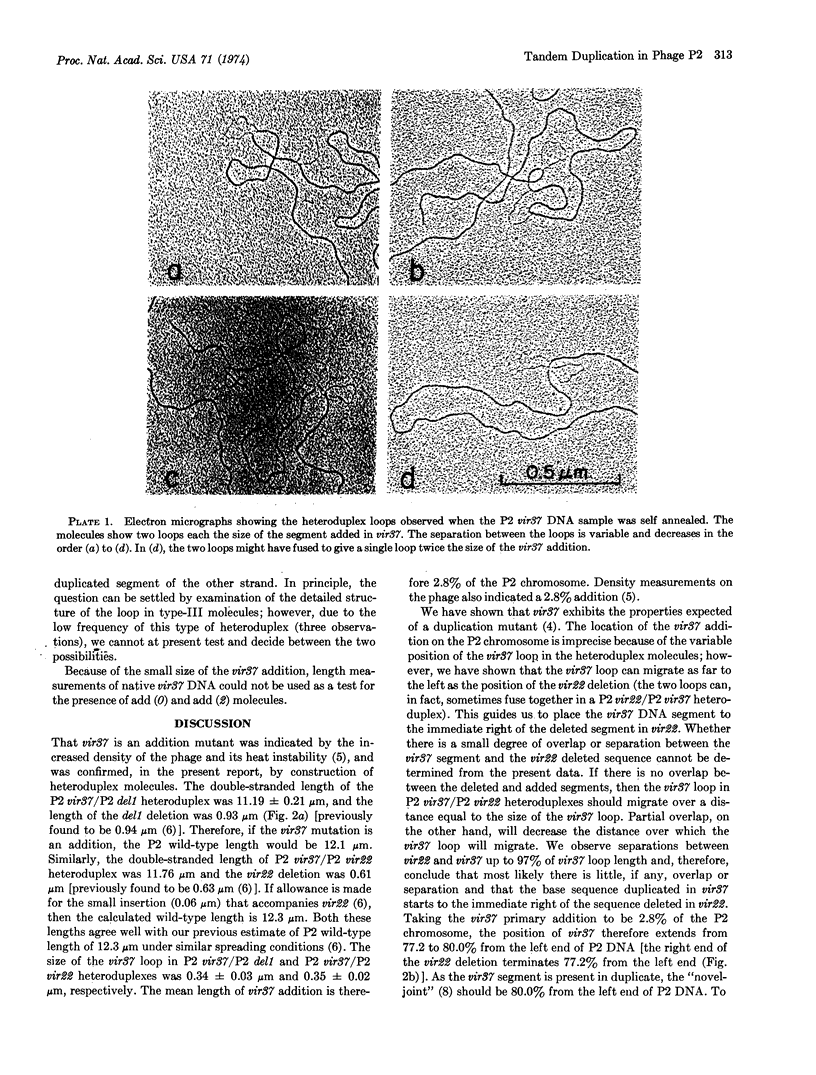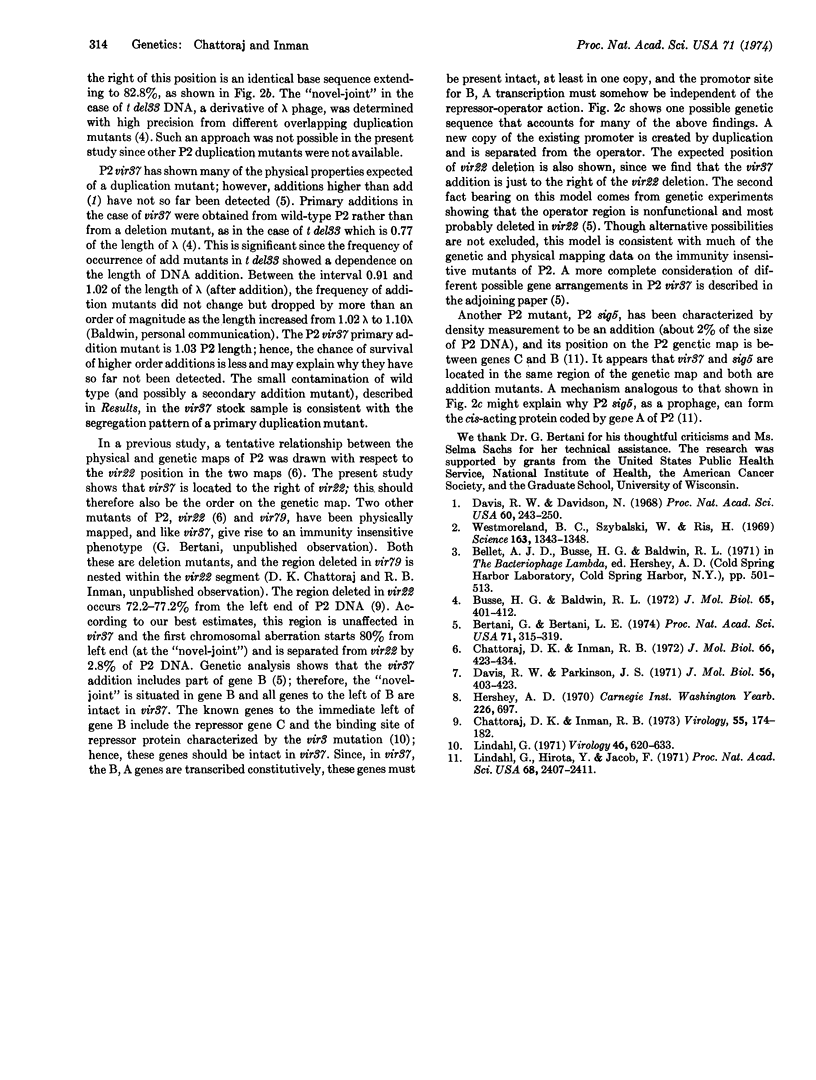Abstract
The physical position of vir37, a new immunity-insensitive mutant of Escherichia coli bacteriophage P2, was mapped by the electron microscopic heteroduplex method. In P2 vir37, a segment equivalent to 2.8% of P2 DNA is added. The addition was characterized as a tandem duplication of the segment occurring between 77.2 and 80.0% from the left end of P2 DNA (the right half of P2 DNA is arbitrarily defined, from denaturation map studies, as the half richer in A + T). The point of addition of the duplicated segment (the “novel-joint”) was, thus, 80.0% from the left end of P2 DNA. On the basis of previous studies on P2 vir22, it was tentatively concluded that the physical and genetic maps of P2 are colinear. This conclusion is now further supported by physical and genetic data on P2 vir37.
Keywords: heteroduplexes, novel-joint, physical and genetic maps, P2 vir37
Full text
PDF



Images in this article
Selected References
These references are in PubMed. This may not be the complete list of references from this article.
- Bertani G., Bertani L. E. Constitutive expression of bacteriophage P2 early genes resulting from a tandem duplication. Proc Natl Acad Sci U S A. 1974 Feb;71(2):315–319. doi: 10.1073/pnas.71.2.315. [DOI] [PMC free article] [PubMed] [Google Scholar]
- Busse H. G., Baldwin R. L. Tandem genetic duplications in a derivative of phage lambda. II. Evidence for structure and location of endpoints. J Mol Biol. 1972 Apr 14;65(3):401–412. doi: 10.1016/0022-2836(72)90197-0. [DOI] [PubMed] [Google Scholar]
- Chattoraj D. K., Inman R. B. Electron microscope heteroduplex mapping of P2 Hy dis bacteriophage DNA. Virology. 1973 Sep;55(1):174–182. doi: 10.1016/s0042-6822(73)81019-0. [DOI] [PubMed] [Google Scholar]
- Chattoraj D. K., Inman R. B. Position of two deletion mutations on the physical map of bacteriophage P2. J Mol Biol. 1972 May 28;66(3):423–434. doi: 10.1016/0022-2836(72)90424-x. [DOI] [PubMed] [Google Scholar]
- Davis R. W., Davidson N. Electron-microscopic visualization of deletion mutations. Proc Natl Acad Sci U S A. 1968 May;60(1):243–250. doi: 10.1073/pnas.60.1.243. [DOI] [PMC free article] [PubMed] [Google Scholar]
- Davis R. W., Parkinson J. S. Deletion mutants of bacteriophage lambda. 3. Physical structure of att-phi. J Mol Biol. 1971 Mar 14;56(2):403–423. doi: 10.1016/0022-2836(71)90473-6. [DOI] [PubMed] [Google Scholar]
- Hershey A. D. Genes and hereditary characteristics. Nature. 1970 May 23;226(5247):697–700. doi: 10.1038/226697a0. [DOI] [PubMed] [Google Scholar]
- Lindahl G., Hirota Y., Jacob F. On the process of cellular division in Escherichia coli: replication of the bacterial chromosome under control of prophage P2. Proc Natl Acad Sci U S A. 1971 Oct;68(10):2407–2411. doi: 10.1073/pnas.68.10.2407. [DOI] [PMC free article] [PubMed] [Google Scholar]
- Lindahl G. On the control of transcription in bacteriophage P2. Virology. 1971 Dec;46(3):620–633. doi: 10.1016/0042-6822(71)90065-1. [DOI] [PubMed] [Google Scholar]
- Westmoreland B. C., Szybalski W., Ris H. Mapping of deletions and substitutions in heteroduplex DNA molecules of bacteriophage lambda by electron microscopy. Science. 1969 Mar 21;163(3873):1343–1348. doi: 10.1126/science.163.3873.1343. [DOI] [PubMed] [Google Scholar]



